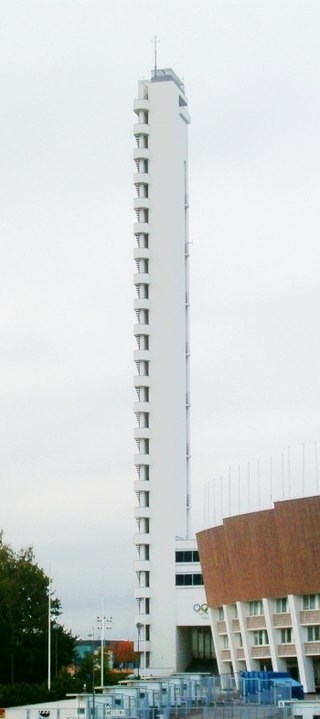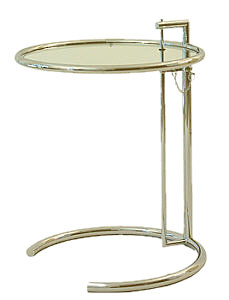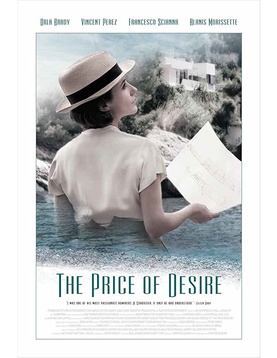
Charles-Édouard Jeanneret, known as Le Corbusier, was a Swiss-French architect, designer, painter, urban planner and writer, who was one of the pioneers of what is now regarded as modern architecture. He was born in Switzerland and acquired French nationality by naturalization on 19 September 1930. His career spanned five decades, in which he designed buildings in Europe, Japan, India, as well as North and South America. He considered that "the roots of modern architecture are to be found in Viollet-le-Duc".

Villa Savoye is a modernist villa and gatelodge in Poissy, on the outskirts of Paris, France. It was designed by the Swiss-French architect Le Corbusier and his cousin Pierre Jeanneret, and built between 1928 and 1931 using reinforced concrete.

Modern architecture was an architectural movement and style that was prominent in the 20th century, between the earlier Art Deco and later postmodern movements. Modern architecture was based upon new and innovative technologies of construction ; the principle functionalism ; an embrace of minimalism; and a rejection of ornament.

In architecture, functionalism is the principle that buildings should be designed based solely on their purpose and function. An international functionalist architecture movement emerged in the wake of World War I, as part of the wave of Modernism. Its ideas were largely inspired by a desire to build a new and better world for the people, as broadly and strongly expressed by the social and political movements of Europe after the extremely devastating world war. In this respect, functionalist architecture is often linked with the ideas of socialism and modern humanism.
The year 1929 in architecture involved some significant architectural events and new buildings.
The year 1924 in architecture involved some significant architectural events and new buildings.

Eileen Gray was an Irish architect and furniture designer who became a pioneer of the Modern Movement in architecture. Over her career, she was associated with many notable European artists of her era, including Kathleen Scott, Adrienne Gorska, Le Corbusier, and Jean Badovici, with whom she was romantically involved. Her most famous work is the house known as E-1027 in Roquebrune-Cap-Martin, France.

Roquebrune-Cap-Martin, simply Roquebrune until 1921, is a commune in the Alpes-Maritimes department in the Provence-Alpes-Côte d'Azur region, Southeastern France, between Monaco and Menton. The name was changed from Roquebrune to differentiate the town from Roquebrune-sur-Argens in neighbouring Var.

The International Exhibition of Modern Decorative and Industrial Arts was a specialized exhibition held in Paris, France, from April to October 1925. It was designed by the French government to highlight the new modern style of architecture, interior decoration, furniture, glass, jewelry and other decorative arts in Europe and throughout the world. Many ideas of the international avant-garde in the fields of architecture and applied arts were presented for the first time at the exposition. The event took place between the esplanade of Les Invalides and the entrances of the Grand Palais and Petit Palais, and on both banks of the Seine. There were 15,000 exhibitors from twenty different countries, and it was visited by sixteen million people during its seven-month run. The modern style presented at the exposition later became known as "Art Deco", after the exposition's name.

Modern furniture refers to furniture produced from the late 19th century through the present that is influenced by modernism. Post-World War II ideals of cutting excess, commodification, and practicality of materials in design heavily influenced the aesthetic of the furniture. It was a tremendous departure from all furniture design that had gone before it. There was an opposition to the decorative arts, which included Art Nouveau, Neoclassical, and Victorian styles. Dark or gilded carved wood and richly patterned fabrics gave way to the glittering simplicity and geometry of polished metal. The forms of furniture evolved from visually heavy to visually light. This shift from decorative to minimalist principles of design can be attributed to the introduction of new technology, changes in philosophy, and the influences of the principles of architecture. As Philip Johnson, the founder of the Department of Architecture and Design at the Museum of Modern Art articulates:
"Today industrial design is functionally motivated and follows the same principles as modern architecture: machine-like simplicity, smoothness of surface, avoidance of ornament ... It is perhaps the most fundamental contrast between the two periods of design that in 1900 the Decorative Arts possessed ..."
Feminist theory as it relates to architecture has forged the way for the rediscovery of such female architects as Eileen Gray. These women imagined an architecture that challenged the way the traditional family would live. They practiced architecture with what they considered feminist theories or approaches. The rediscovery of architecture through feminist theory is not limited to female architects. Architects like Le Corbusier and Adolf Loos have also had their architecture reexamined through feminist theory.
Jean Badovici was a French architect and architecture critic of Romanian origin, active in Paris.
L'Architecture Vivante was a French language quarterly magazine for avant-garde architecture published in France from 1923 to 1932.

Tim Benton is Professor Emeritus in the History of Art at the Open University in the UK as well as a writer and broadcaster. He has also taught at Columbia University, Williams College, and École Polytechnique Fédérale de Lausanne. He has written extensively on the modernist architect Le Corbusier. A large collection of photographs by Tim Benton is held in the Courtauld Institute of Art's Conway Library archive, which is currently undergoing a digitisation project.
Sandra Eileen Gering is an American gallerist, curator, and art dealer specializing in modern and contemporary art. She owned and operated commercial galleries in New York City. She is a proponent of conceptual art and interdisciplinary practices.

Zeev Aram, OBE was a British furniture and interior designer. He was the founder and chairman of Aram Designs Ltd, a modern furniture store in London's Covent Garden serving both the retail and contract market. He is responsible for introducing to the London market designers such as Marcel Breuer, the Castiglioni brothers, Mies van der Rohe, and Le Corbusier.

Carmen Espegel Alonso, is a Doctor of Architecture at the Escuela Técnica Superior de Arquitectura de Madrid (Spain), where she teaches Architectural Project classes representing the Espegel Teaching Unit. She has been working at her own studio since 1985 and in 2003 she founded the firm espegel-fisac arquitectos. Her reference work, "Heroines of Space. Women Architects in the Modern Movement", is a theoretical and historical synthesis of the role of women in Architecture.

Table E 1027 is an adjustable steel and glass table designed by Irish designer Eileen Gray in 1927. Originally created for her E-1027 house, the table has since become one of Gray's most famous designs.

The Villa Le Lac, also known as the Villa "Le Lac" Le Corbusier, is a residential building on Lake Geneva in Corseaux, Canton of Vaud, Switzerland, designed by Swiss architects and cousins Le Corbusier and Pierre Jeanneret between 1923 and 1924 for Le Corbusier's parents. It is an example of residential Modern architecture and showcases three of Le Corbusier's Five Points of Architecture. The building is a designated Swiss Cultural Property of National Significance and was added to the UNESCO World Heritage List in 2016.

The Price of Desire is a 2015 Belgian-Irish biographical drama film directed by Mary McGuckian.
















